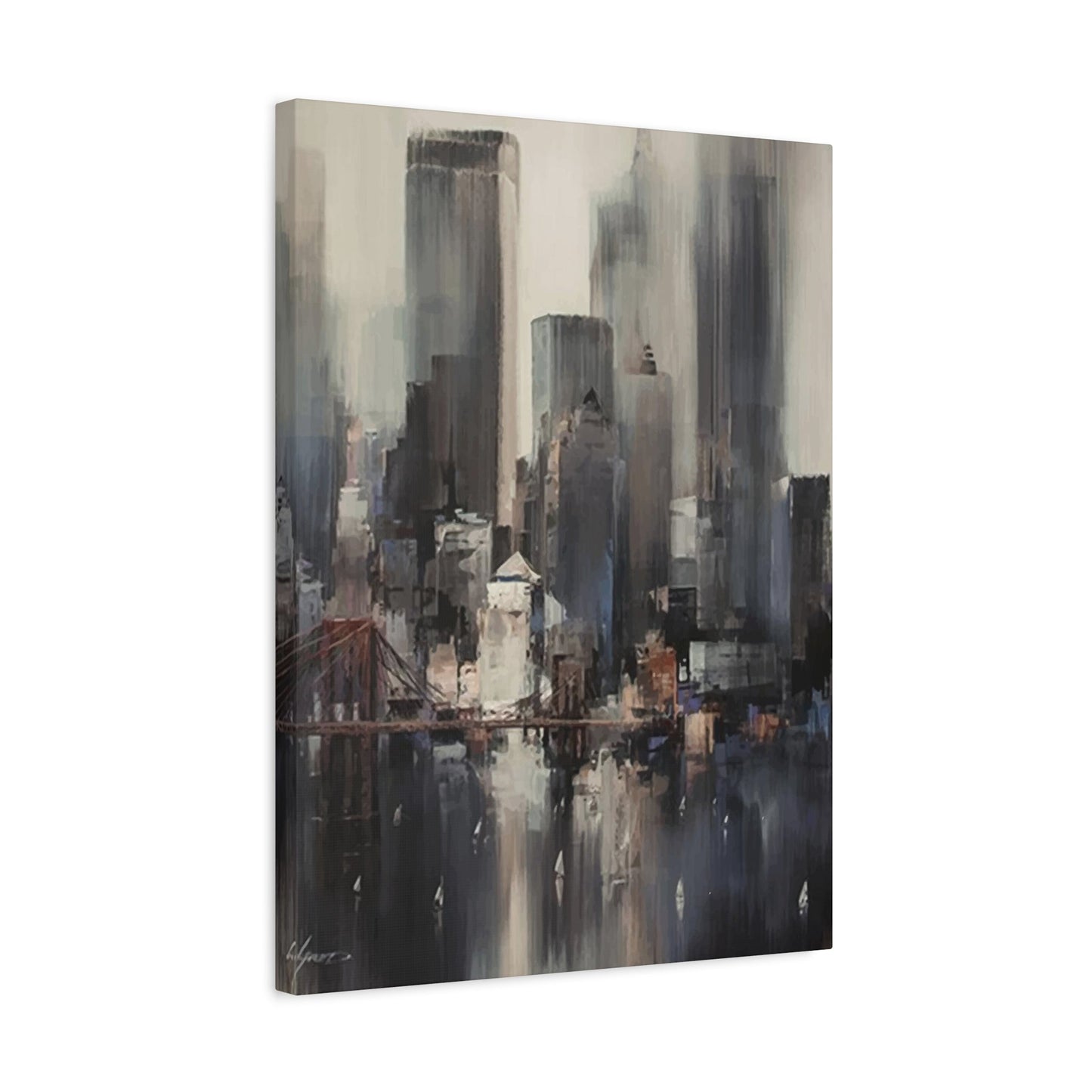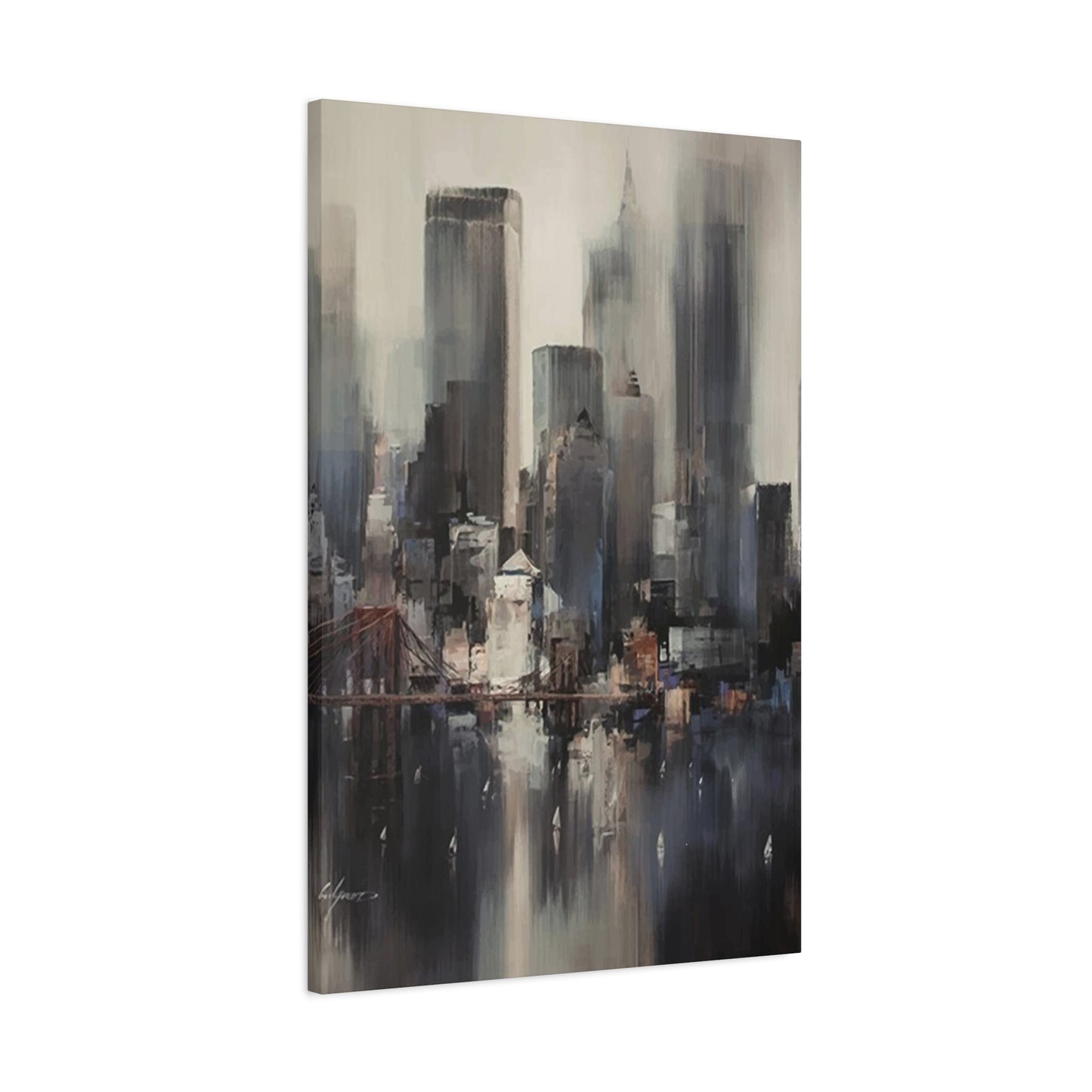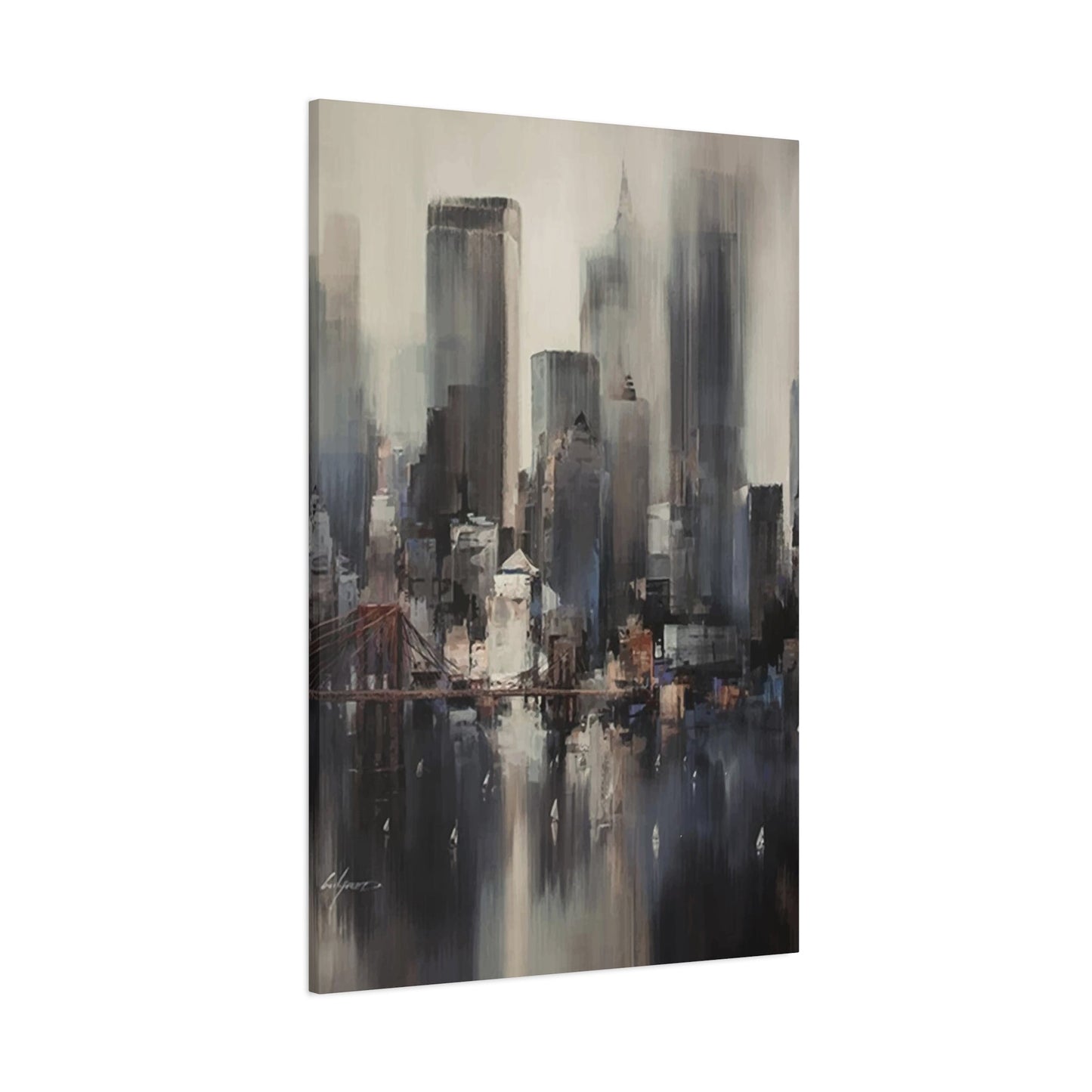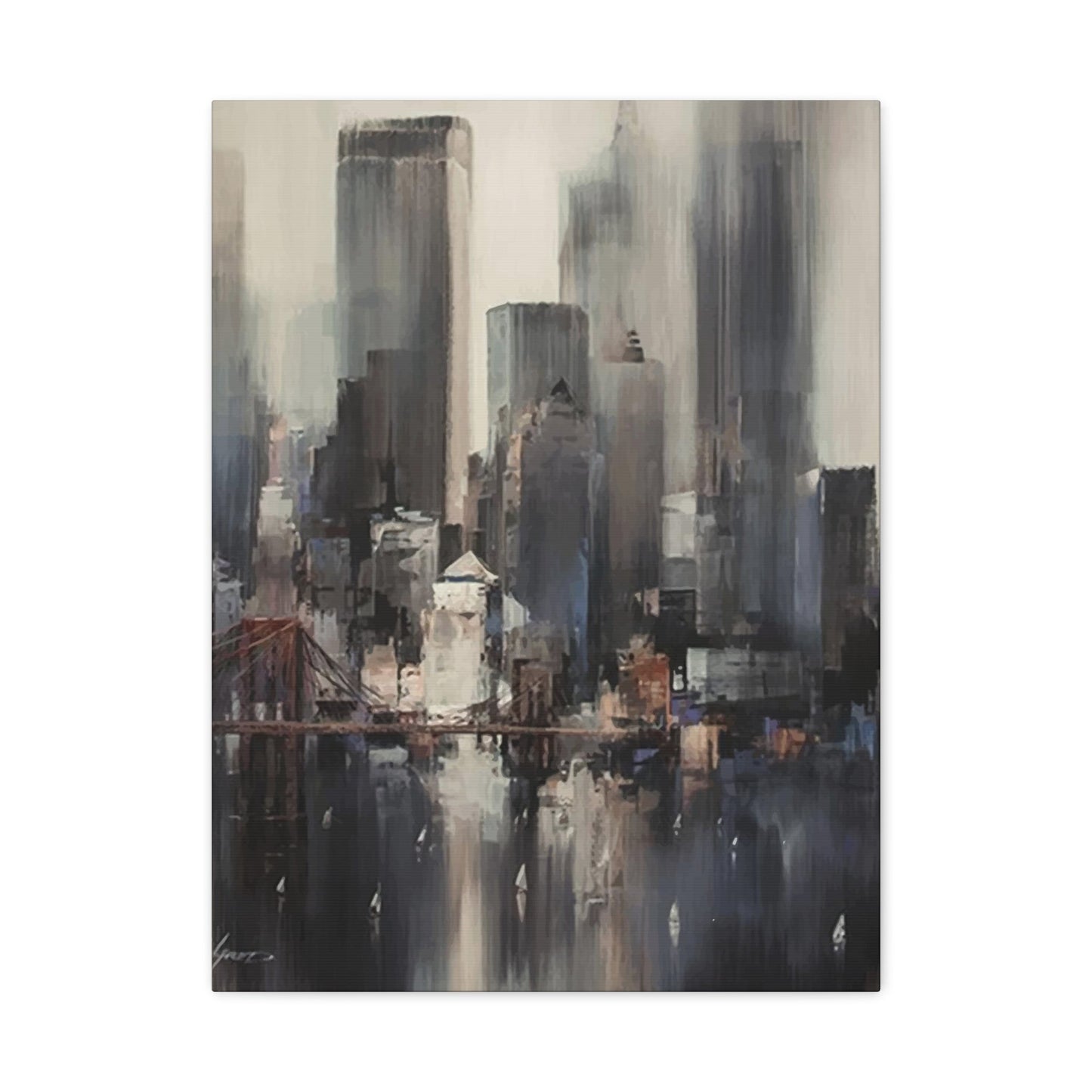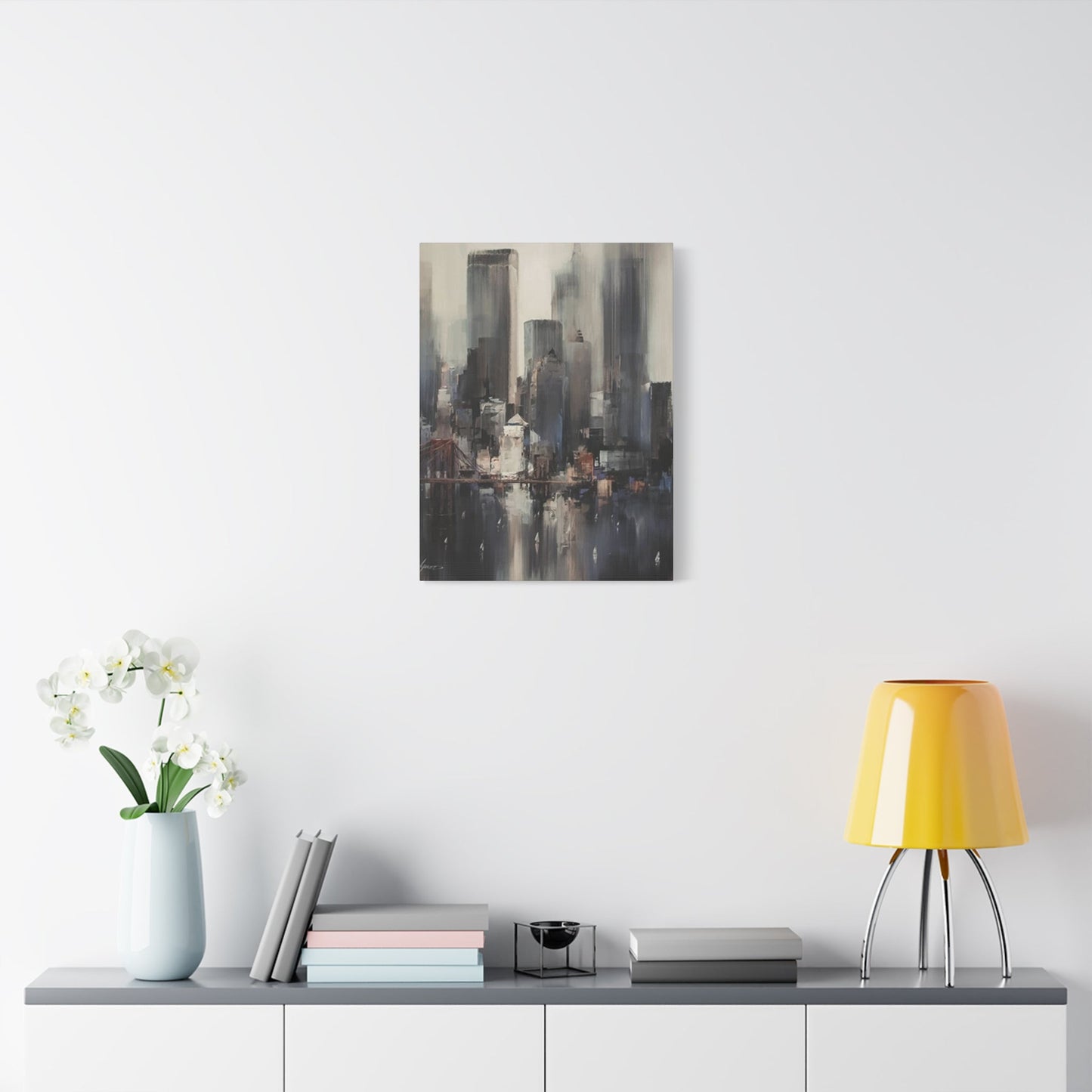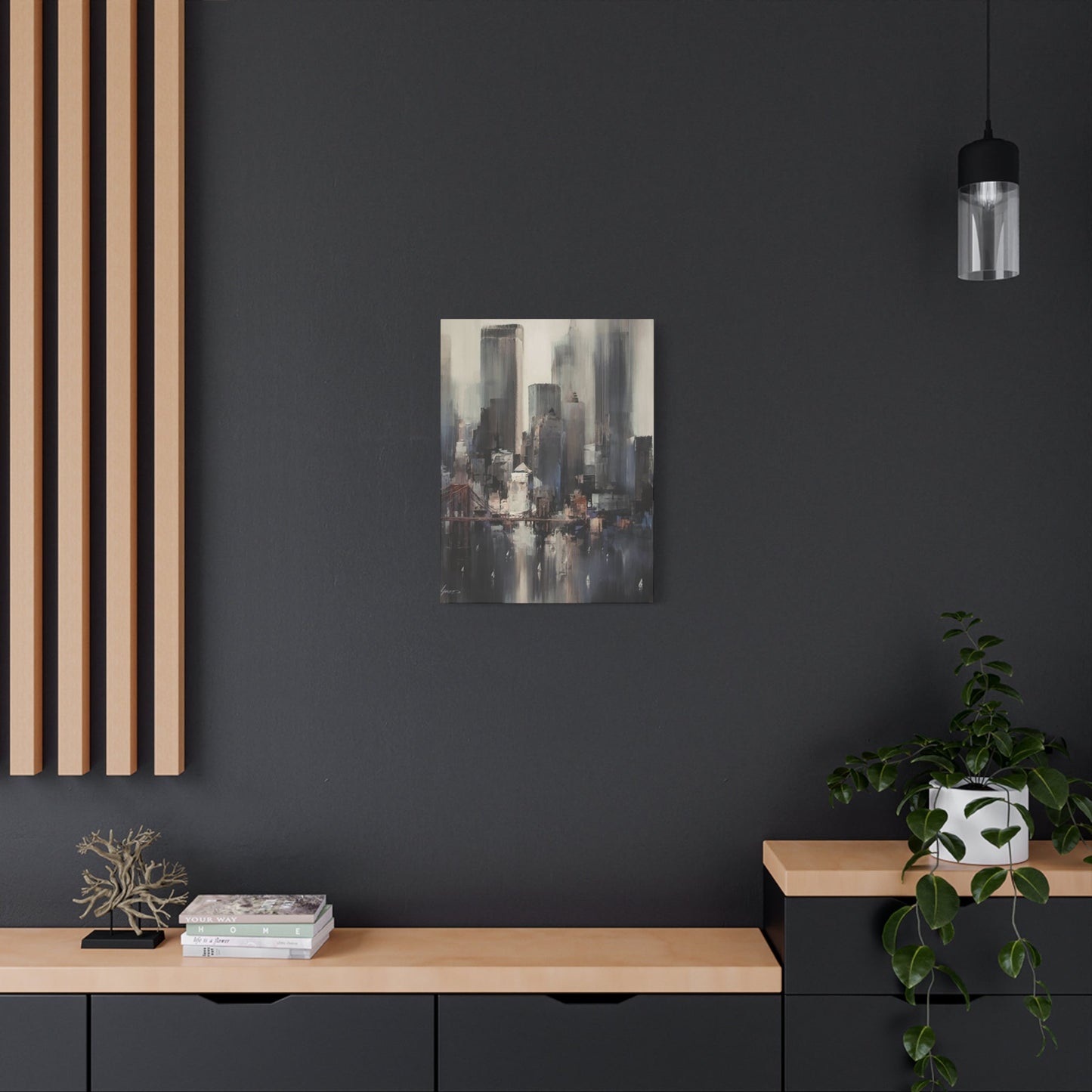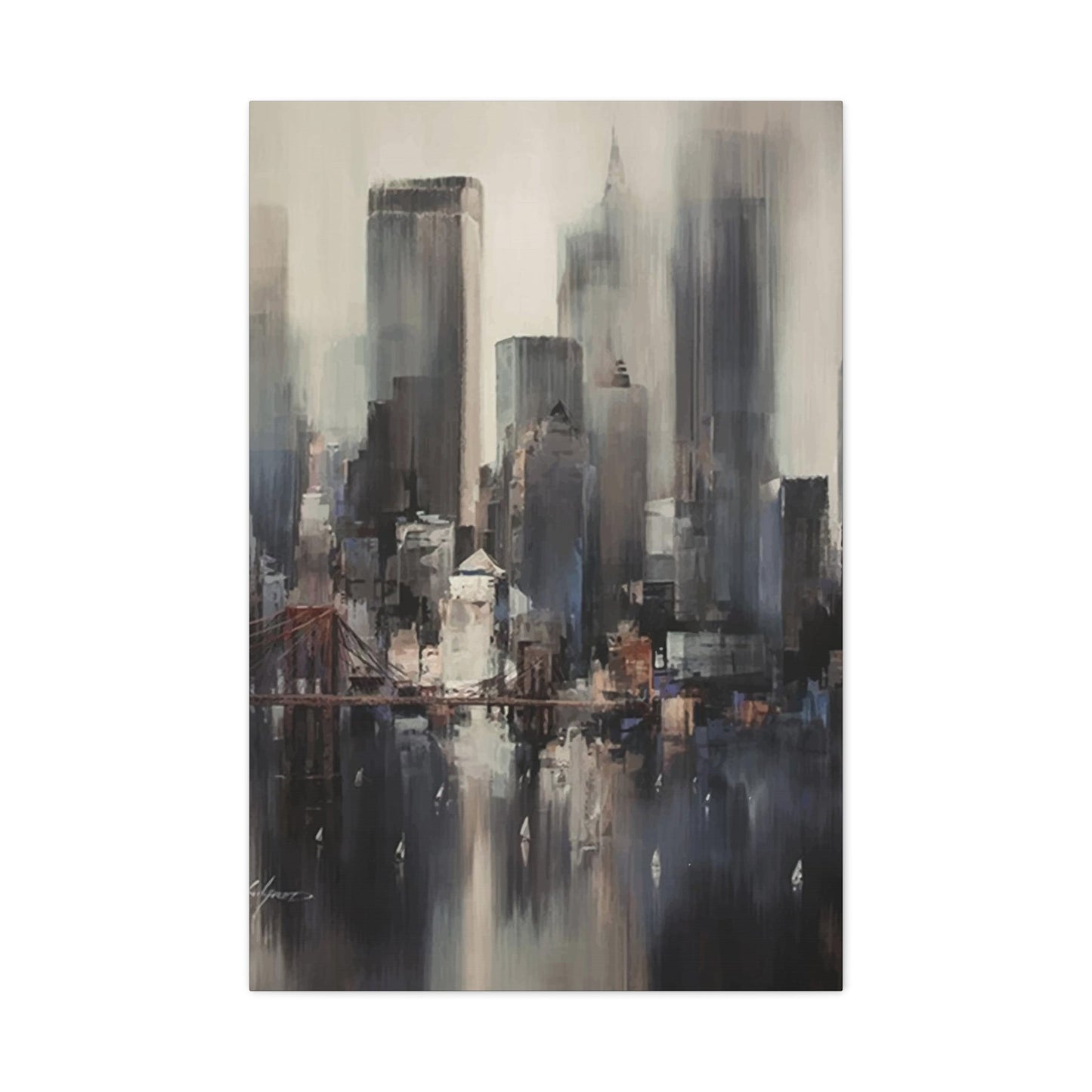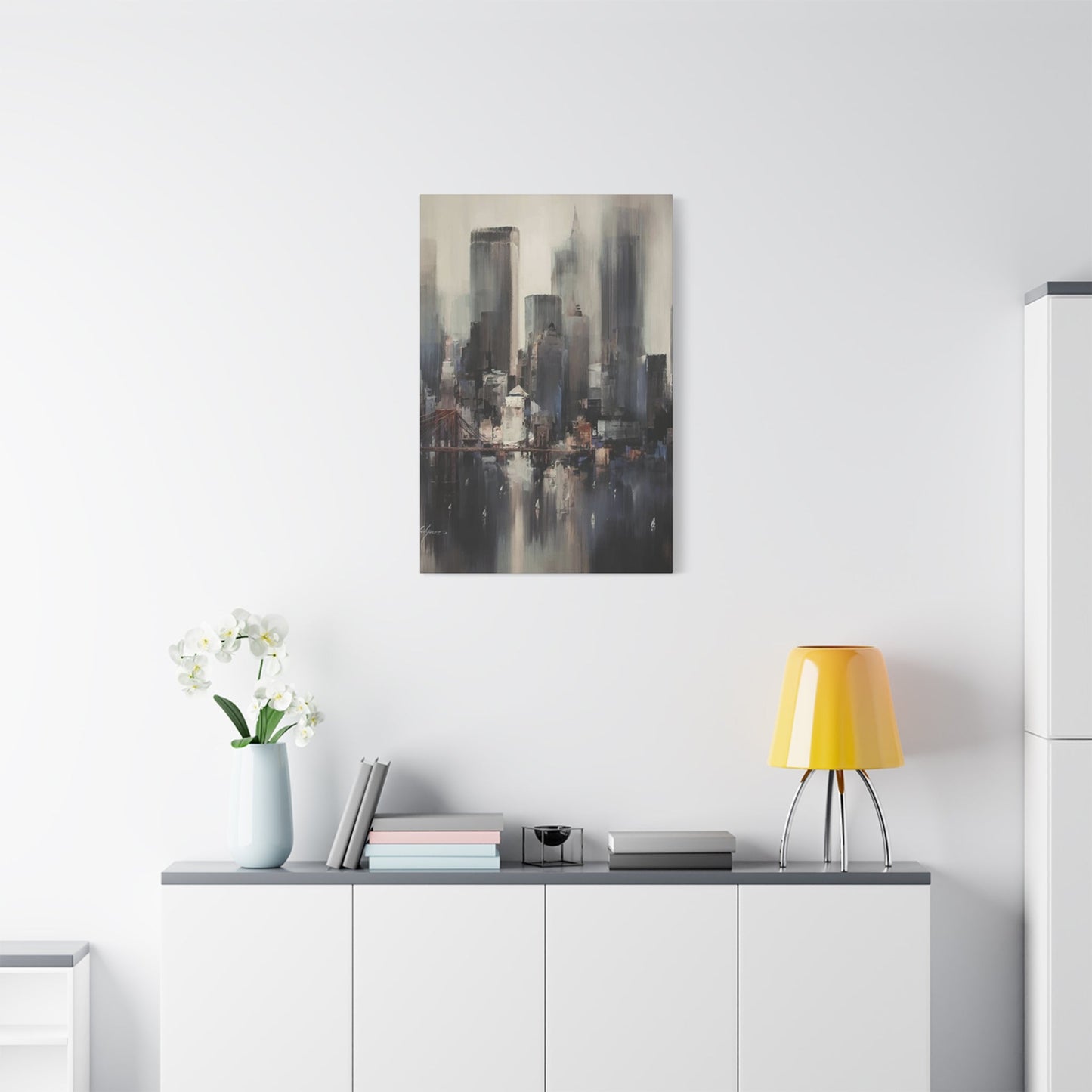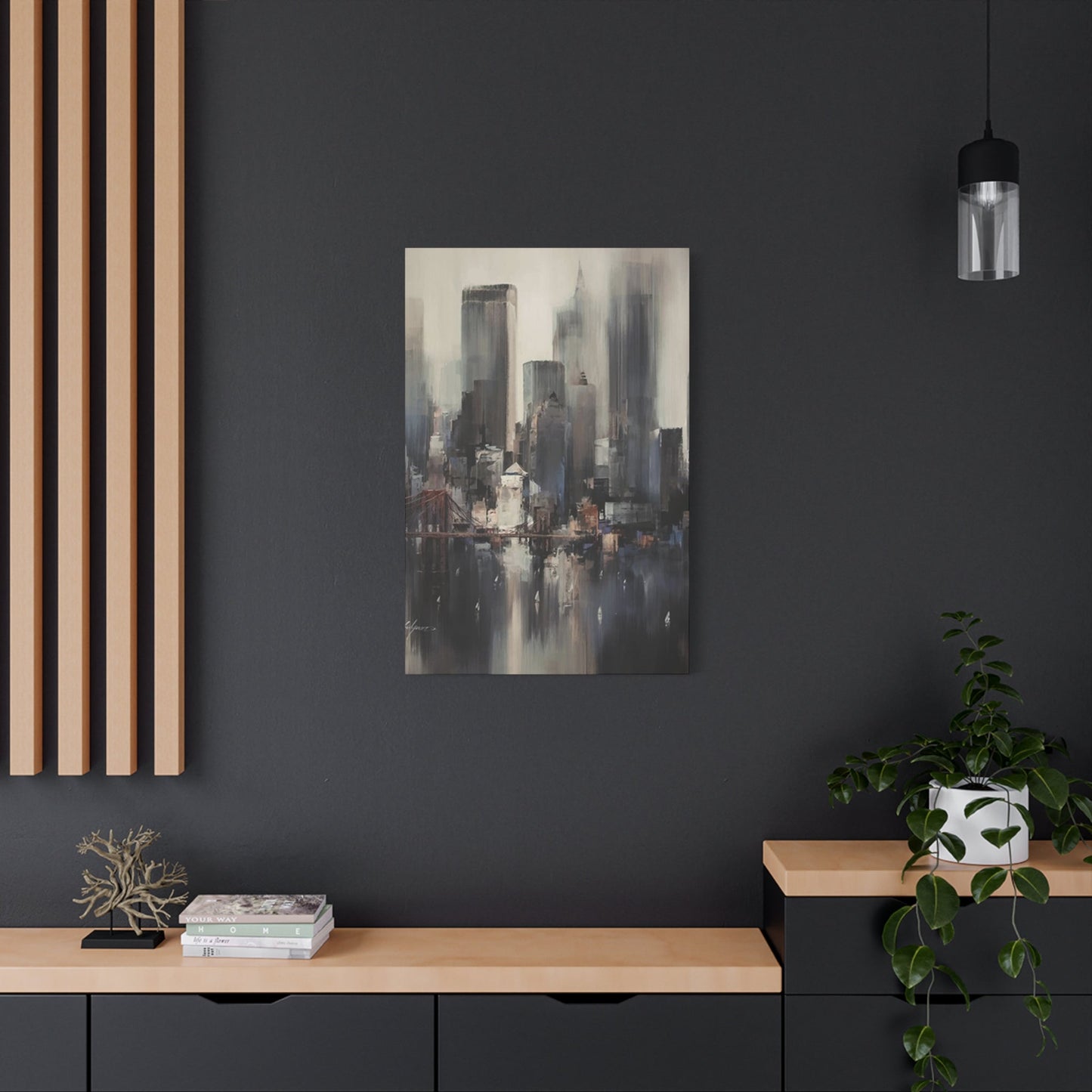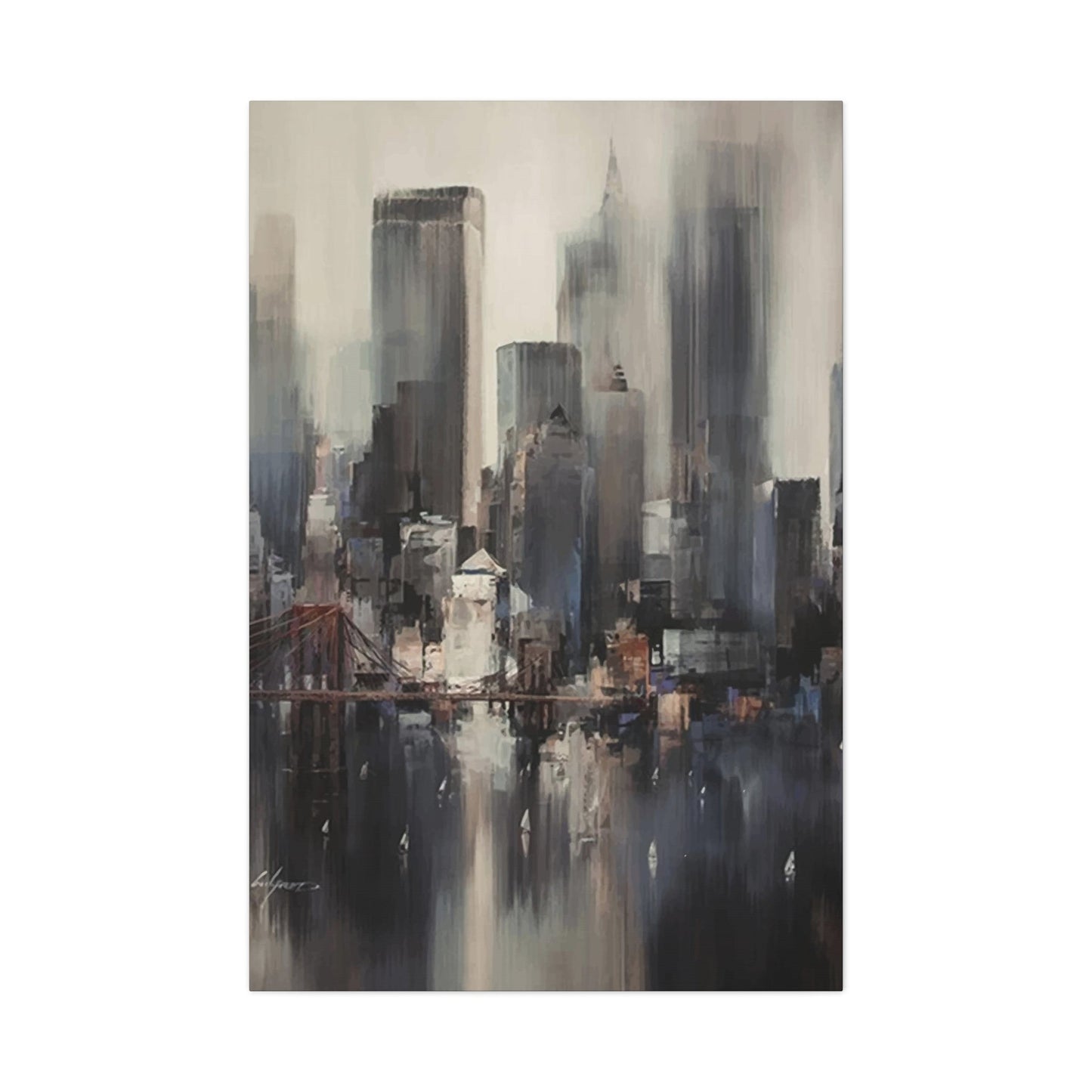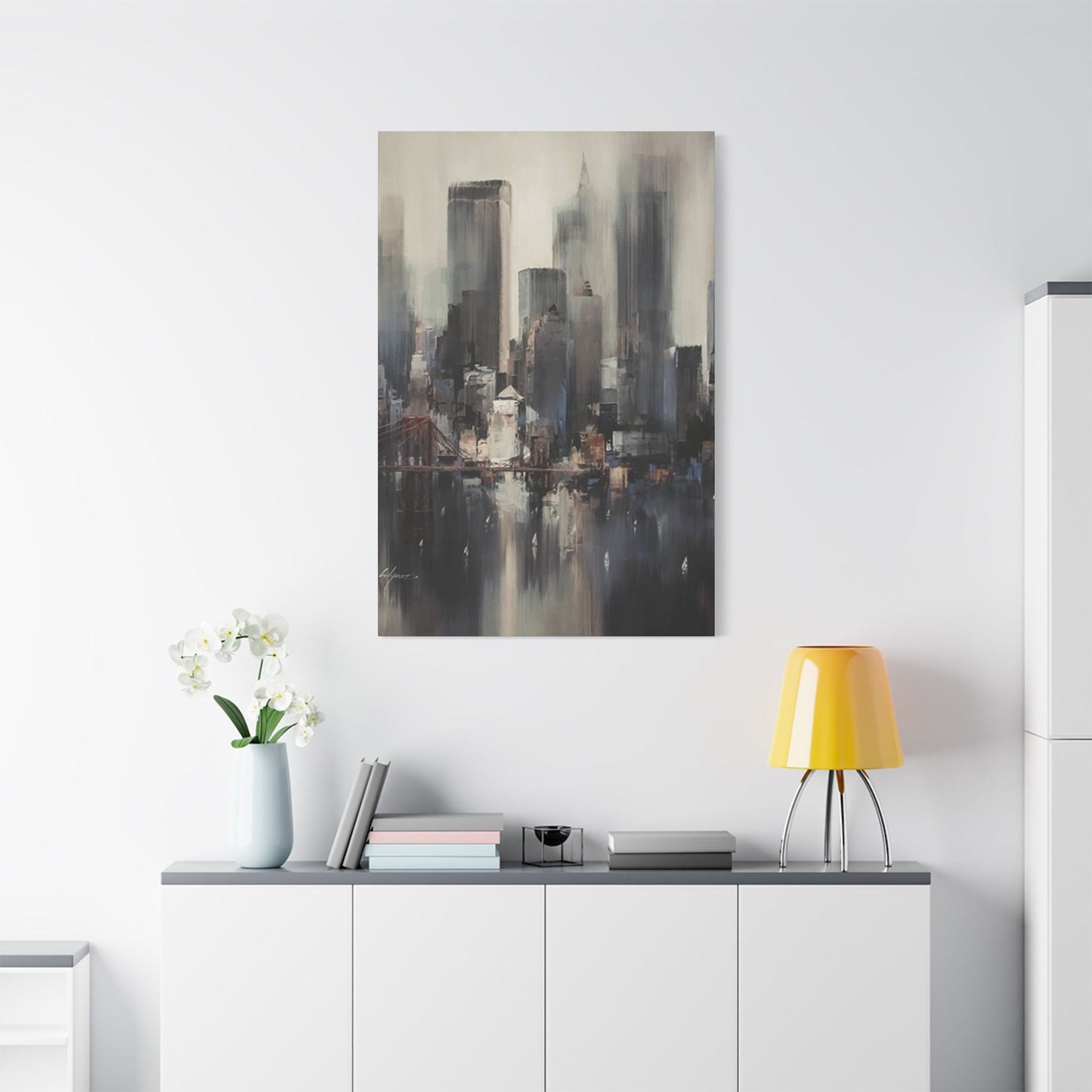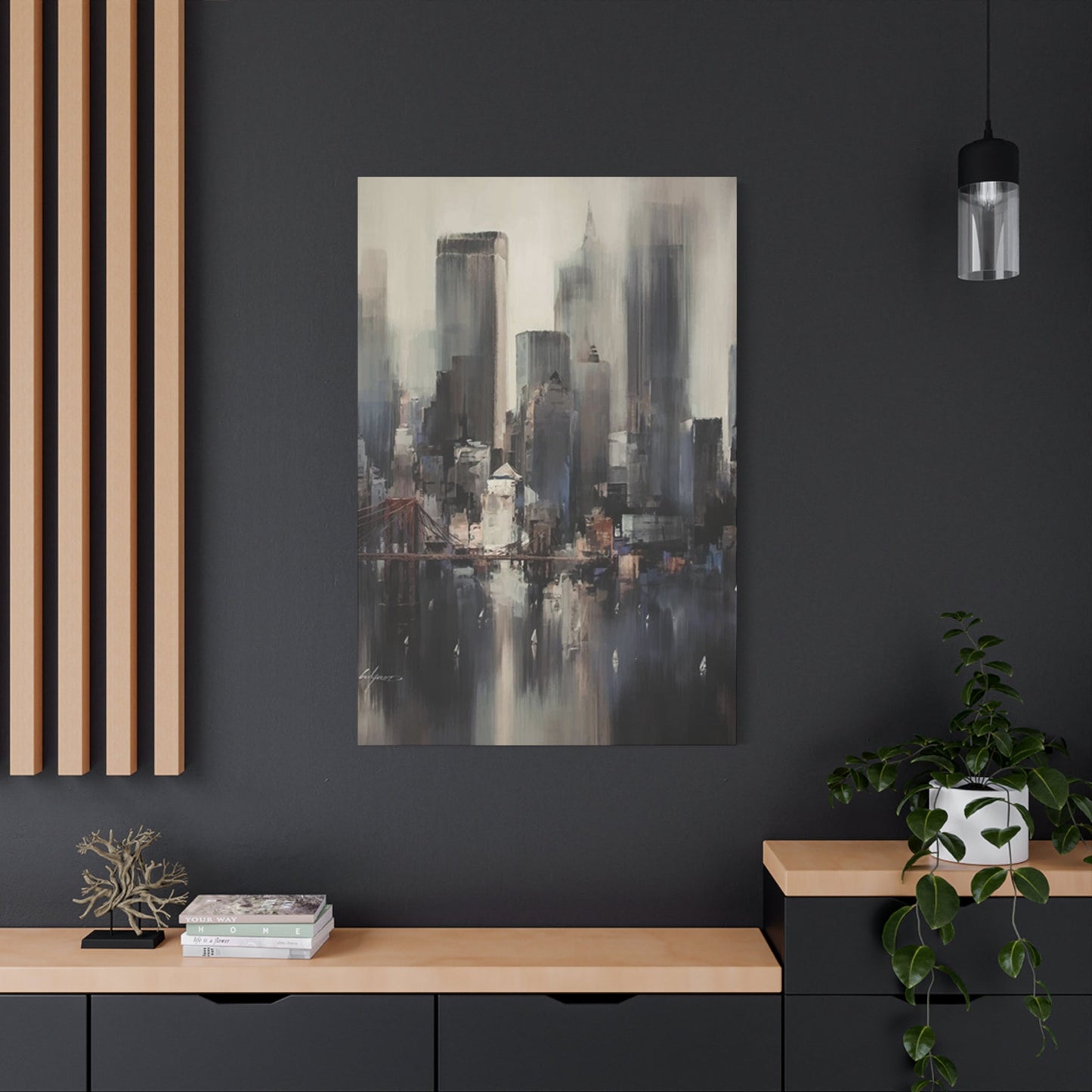Revolutionary Charcoal Splatter Wall art: Mastering the Fusion of Precision and Chaos
The world of contemporary art has witnessed a remarkable evolution in mixed-media techniques, particularly in the realm of charcoal splatter art. This distinctive artistic approach represents a bold departure from traditional drawing methods, combining the refined precision of charcoal work with the unbridled energy of splatter painting. Artists who embrace this methodology create works that pulsate with raw emotion while maintaining the sophisticated depth that charcoal naturally provides.
The foundation of charcoal splatter art lies in the deliberate contrast between control and spontaneity. Traditional charcoal drawing requires meticulous attention to detail, careful shading, and precise mark-making. When combined with splatter techniques, this careful control becomes juxtaposed against moments of pure artistic abandon. The result is artwork that captures both the contemplative nature of detailed drawing and the explosive energy of action painting.
Professional artists working in this medium often describe the process as a dance between patience and impulse. The charcoal work typically forms the structural foundation of the piece, establishing composition, form, and tonal relationships. This preliminary stage demands the same level of technical skill and artistic vision as any traditional drawing. However, the introduction of splatter elements transforms the work into something entirely different, adding layers of texture, movement, and emotional intensity that charcoal alone cannot achieve.
The historical context of this artistic fusion traces back to the experimental movements of the mid-20th century, when artists began breaking down the barriers between different media. Abstract Expressionists pioneered the use of unconventional application methods, including splashing, dripping, and throwing paint onto canvas. Contemporary charcoal splatter artists have taken these concepts and refined them, creating a sophisticated approach that honors both the precision of traditional drawing and the freedom of gestural painting.
Materials selection plays a crucial role in successful charcoal splatter artwork. The charcoal itself must be of sufficient quality to maintain its integrity throughout the layering process. Professional-grade compressed charcoal offers the density and richness needed for strong foundational work, while vine charcoal provides the flexibility required for subtle transitions and atmospheric effects. The paper or canvas selection becomes equally important, as the surface must be robust enough to withstand both the pressure of charcoal application and the moisture content of splatter media.
Raw Emotional Expression Through Black and Splatter Combinations
The psychological impact of combining deep charcoal blacks with vibrant splatter colors creates an immediate emotional response in viewers. This combination taps into primal visual associations, where the darkness of charcoal suggests introspection, mystery, or melancholy, while the splatter elements introduce elements of surprise, energy, and liberation. The resulting artwork speaks to the complexity of human emotion, acknowledging both our contemplative depths and our explosive moments of feeling.
Artists working in this style often report that the medium itself influences their emotional expression. The process of carefully building up charcoal layers requires a meditative mindset, encouraging the artist to slow down and connect deeply with their subject matter. This contemplative phase establishes the emotional foundation of the work. When the splatter phase begins, there's a dramatic shift in energy and approach that allows for the release of pent-up emotions and the expression of feelings that might be difficult to capture through traditional drawing alone.
The monochromatic nature of charcoal provides an excellent backdrop for understanding color relationships when splatters are introduced. Against the neutral grays and blacks of charcoal work, even small amounts of color become dramatically intensified. This phenomenon allows artists to use color strategically, creating focal points, establishing mood, or adding symbolic meaning to their compositions. The restraint required to work primarily in black and gray actually enhances the impact of color when it appears.
Contemporary viewers often find charcoal splatter artwork particularly compelling because it mirrors the pace and complexity of modern life. The careful, methodical charcoal work represents our need for stability, planning, and control, while the splatter elements acknowledge the chaos, spontaneity, and unexpected events that characterize contemporary existence. This duality creates artwork that feels both timeless and urgently contemporary.
The emotional range achievable through charcoal splatter techniques is remarkably broad. Subtle splatters can add gentle texture and visual interest without overwhelming the charcoal work, creating pieces that feel contemplative and serene. More aggressive splatter applications can create dramatic tension, suggesting conflict, passion, or transformation. The artist's emotional state and intended message largely determine the balance between these elements.
Technical considerations for achieving maximum emotional impact include understanding the drying times of different splatter media, knowing how to protect completed charcoal work during the splatter phase, and developing the hand-eye coordination necessary to place splatters with intentional precision rather than pure randomness. Many artists spend considerable time practicing splatter techniques on separate surfaces before applying them to finished charcoal work.
Expressive Artistic Techniques Using Charcoal Splashes
The technical execution of charcoal splatter art requires a sophisticated understanding of both media and their interaction. Unlike traditional painting where colors can be easily mixed and modified, charcoal splatter work demands a more strategic approach to layering and application. The permanence of charcoal marks means that artists must carefully plan their approach, considering how splatter elements will interact with existing charcoal work without destroying the underlying structure.
Professional artists have developed numerous techniques for creating controlled splatter effects that enhance rather than overwhelm charcoal foundations. Brush splatter techniques involve loading various sizes of brushes with thinned paint or ink, then using finger flicks or sharp movements to create controlled splatter patterns. The size of the brush, the consistency of the medium, and the force of application all influence the resulting splatter characteristics. Fine brushes create delicate, rain-like effects, while larger brushes produce more dramatic, explosive patterns.
Spray bottle techniques offer another level of control, allowing artists to create misty, atmospheric effects or more concentrated bursts of color and texture. The distance between the spray source and the artwork, the pressure applied, and the nozzle settings all contribute to the final effect. Some artists use multiple spray bottles with different media, creating complex layered effects that would be impossible to achieve through traditional painting methods.
Palette knife splatter techniques involve loading a palette knife with medium and then flicking it against a fixed object, creating directional splatter patterns. This method offers excellent control over splatter direction and intensity, making it possible to create compositional elements that support and enhance the underlying charcoal work rather than competing with it. The flexibility of the palette knife and the consistency of the medium both influence the resulting patterns.
Advanced practitioners often combine multiple splatter techniques within a single work, creating complex textural relationships that add visual depth and interest. The key to successful combination techniques lies in understanding how different splatter methods interact with each other and with the charcoal foundation. Each technique has its own timing requirements, drying characteristics, and visual impact, requiring careful orchestration to achieve cohesive results.
Digital documentation of the splatter process has become increasingly important for artists working in this medium. High-speed photography can capture the moment of splatter impact, revealing patterns and effects that are impossible to see with the naked eye. This documentation serves both as a learning tool for technique refinement and as a creative resource for future works. Many artists now maintain extensive digital libraries of splatter effects, catalogued by technique, medium, and visual impact.
Transitioning From Shadows to Dynamic Splatters
The conceptual journey from traditional shadow work to dynamic splatter integration represents a significant artistic evolution that requires both technical skill and creative vision. Traditional charcoal work excels at creating subtle gradations, deep shadows, and atmospheric effects that give drawings their sense of depth and realism. The introduction of splatter elements requires artists to reconceptualize their approach to these fundamental drawing principles.
Shadow work in charcoal splatter art maintains its essential role in establishing form and dimension, but it must be executed with an awareness of how splatter elements will interact with these carefully crafted tonal relationships. Artists often develop modified shading techniques that create strong foundational contrast while leaving strategic areas available for splatter enhancement. This might involve creating slightly lighter shadow areas than would be typical in pure charcoal work, anticipating the darkening effect of overlaid splatter elements.
The transition from shadows to splatters often occurs gradually within individual works, with artists building confidence through small splatter applications before attempting more dramatic effects. Beginning practitioners might start by adding subtle splatter elements to background areas, where mistakes can be more easily incorporated into the overall composition. As skill and confidence develop, splatter elements can be integrated more prominently into focal areas and key compositional elements.
Professional artists working in this style have developed systematic approaches to the shadow-to-splatter transition that ensure consistency and coherence across their body of work. These approaches often begin with complete or near-complete charcoal foundations, followed by careful analysis of where splatter elements can enhance the existing composition. This analysis considers factors such as compositional balance, emotional impact, color relationships, and technical feasibility.
The psychological aspect of transitioning from careful shadow work to dynamic splatter application cannot be underestimated. Many artists find this shift challenging because it requires releasing control over precise mark-making and embracing elements of chance and spontaneity. Successful practitioners develop mental preparation techniques that help them make this transition smoothly, often using breathing exercises, physical warm-up routines, or meditation practices to shift from the contemplative mindset required for shadow work to the dynamic energy needed for effective splatter application.
Environmental considerations play a crucial role in successful shadow-to-splatter transitions. The workspace must be configured to support both precise charcoal work and dynamic splatter techniques, often requiring adjustable easels, protective coverings, and adequate ventilation. The physical setup should allow artists to move freely between detailed work and gestural splatter application without disrupting their creative flow or damaging completed work.
Moody Strokes and Paint Explosions in Contemporary Art
The contemporary art world has embraced the dramatic tension created by combining moody charcoal strokes with explosive paint applications, recognizing this technique as a powerful means of expressing the complexity and contradiction inherent in modern experience. This artistic approach resonates particularly strongly with audiences who appreciate work that acknowledges both the contemplative and chaotic aspects of contemporary life.
Moody charcoal strokes serve as the emotional foundation for these works, establishing atmosphere through careful manipulation of tone, texture, and line quality. Professional artists working in this style often spend considerable time developing their charcoal stroke vocabulary, creating personal libraries of mark-making techniques that can convey specific emotions or atmospheric conditions. These might include cross-hatching patterns that suggest anxiety or restlessness, flowing curved strokes that evoke melancholy or introspection, or sharp, angular marks that communicate tension or conflict.
The contrast between moody foundation work and explosive splatter elements creates visual and emotional tension that keeps viewers engaged with the artwork. This tension is not merely decorative but serves important compositional and expressive functions. The controlled, deliberate nature of charcoal work provides stability and grounding, while the unpredictable elements of paint explosion add energy and movement that prevent the work from becoming static or overly controlled.
Professional practitioners have developed sophisticated color theories specifically for charcoal splatter work, understanding how different colors interact with the gray-scale foundation to create specific emotional effects. Warm colors like reds and oranges can add passion and energy to moody charcoal foundations, while cool colors like blues and purples can enhance the contemplative or melancholic qualities of the underlying work. The intensity and saturation of splatter colors also play crucial roles in determining the overall emotional impact of the finished piece.
Contemporary gallery exhibitions increasingly feature charcoal splatter works, recognizing their ability to command attention and create memorable viewing experiences. The scale of these works often plays an important role in their impact, with larger pieces allowing viewers to experience the full dramatic effect of the technique. The viewing distance also becomes a critical factor, as works that appear chaotic from close range often resolve into coherent compositions when viewed from appropriate distances.
The commercial viability of charcoal splatter artwork has grown significantly as collectors and interior designers recognize the technique's ability to create statement pieces that work well in contemporary spaces. The monochromatic foundation of charcoal work ensures that these pieces can integrate into various design schemes while the splatter elements provide the visual interest and energy that contemporary spaces demand.
Charcoal Art Techniques with Wild and Unconventional Elements
The integration of wild and unconventional elements into traditional charcoal art practices represents a significant departure from academic drawing traditions, requiring artists to develop new technical skills and conceptual approaches. This evolution reflects broader changes in contemporary art practice, where boundaries between different media and techniques are increasingly fluid and experimental.
Unconventional mark-making tools have become essential components of the charcoal splatter artist's toolkit. Beyond traditional drawing implements, practitioners employ everything from household objects to custom-made tools for creating unique textural effects. Sponges, credit cards, combs, and textured fabrics can all create distinctive mark patterns when used with charcoal or splatter media. The key to successful unconventional tool use lies in understanding how each implement interacts with different media and surfaces.
Wild splatter techniques go beyond simple brush flicking to include methods that would have been unthinkable in traditional art practice. Some artists use compressed air systems to create controlled paint explosions, while others employ gravity-fed systems that create organic drip and splatter patterns. The most adventurous practitioners have experimented with everything from paint-filled balloons to mechanical splatter devices that create precise, repeatable patterns.
The unpredictability inherent in wild techniques requires artists to develop new approaches to composition and design. Traditional compositional rules often need modification when working with techniques that introduce significant elements of chance. Successful practitioners learn to work with accidents and unexpected effects, incorporating them into their compositions rather than viewing them as mistakes to be corrected.
Safety considerations become paramount when working with wild and unconventional techniques. Proper ventilation, eye protection, and clothing protection are essential, as are appropriate disposal methods for materials and cleanup procedures. Many artists working in this style maintain dedicated studio spaces that can accommodate the mess and potential hazards associated with experimental techniques.
Documentation of experimental techniques becomes crucial for artistic development and consistency. Many practitioners maintain detailed logs of their experimental processes, noting which combinations of techniques, materials, and conditions produce the most satisfactory results. This documentation serves both as a reference for future work and as a basis for teaching these techniques to other artists.
Splatter Meets Sketch: Bridging Traditional and Contemporary Methods
The intersection of traditional sketching methods with contemporary splatter techniques represents a fascinating dialogue between artistic past and present, creating works that honor drawing traditions while embracing modern experimental approaches. This fusion requires deep technical knowledge of both methodologies and a sophisticated understanding of how they can complement rather than compete with each other.
Traditional sketching principles remain fundamental to successful charcoal splatter work, providing the structural foundation upon which more experimental elements can be built. Professional artists working in this style typically possess strong classical drawing skills, understanding proportion, perspective, form, and composition at a level that allows them to create compelling charcoal foundations even when those foundations will be partially obscured by splatter elements.
The integration process requires careful timing and sequencing to ensure that each element enhances the others. Most practitioners complete their charcoal sketching to a high degree of finish before introducing splatter elements, though some artists work in alternating layers, building up charcoal and splatter elements in carefully planned sequences. The chosen approach often depends on the specific artistic goals and the complexity of the intended composition.
Bridge techniques have been developed specifically to smooth the transition between sketching and splatter elements. These might include partial splatter applications over selected areas of the charcoal work, creating gradual transitions that help unify the different elements. Some artists use diluted charcoal washes that can interact more readily with liquid splatter media, creating intermediate tones and textures that serve as bridges between the two techniques.
Contemporary art education increasingly includes instruction in mixed-media approaches like charcoal splatter work, recognizing the importance of providing students with both traditional foundations and contemporary experimental techniques. Educational programs that successfully integrate these approaches typically begin with strong traditional drawing instruction, ensuring that students develop the observational and technical skills necessary for effective charcoal work before introducing the complexities of splatter integration.
The critique and evaluation of charcoal splatter work requires modified approaches that account for both traditional drawing criteria and contemporary experimental values. Successful works must demonstrate technical competency in both charcoal handling and splatter application, while also showing meaningful integration of these elements in service of artistic goals. The evaluation process often considers factors such as compositional coherence, emotional impact, technical innovation, and successful resolution of the inherent tensions between controlled and spontaneous elements.
Abstract Energy Expression in Monochrome Foundations
The use of monochrome charcoal foundations for abstract energy expression creates unique opportunities for exploring the relationship between form and content, structure and chaos, permanence and spontaneity. This approach allows artists to work with the full tonal range of charcoal while reserving color for strategic splatter applications that can create dramatic focal points and energy centers within the composition.
Abstract charcoal work requires a different mindset than representational drawing, focusing on the creation of compelling visual relationships rather than the accurate depiction of observable subjects. Artists working in this style often develop personal vocabularies of abstract forms and compositional strategies that serve as foundations for their splatter applications. These might include geometric patterns, organic flowing forms, or complex layered compositions that create visual depth and interest.
Energy expression through splatter applications becomes a crucial component of successful abstract charcoal work. The placement, intensity, and character of splatter elements can dramatically alter the perceived energy and movement within a composition. Strategic splatter placement can create visual paths that guide viewer attention, while the intensity of splatter application can control the overall energy level of the piece.
Monochrome foundations offer unique advantages for abstract work, allowing artists to focus on tonal relationships, compositional structure, and textural variations without the complexity of color relationships. This simplified color palette can actually enhance the impact of carefully chosen splatter colors, creating dramatic contrasts that would be impossible to achieve in fully chromatic work.
The scale of abstract charcoal splatter work often plays a crucial role in its effectiveness, with larger works allowing for more dramatic gestural elements and more complex compositional relationships. The physical process of creating large-scale work also influences the artistic result, requiring full-body movement that can contribute to the energy and authenticity of the final piece. Many artists find that their most successful abstract works are created through physical processes that mirror the energy they wish to express.
Contemporary abstract art collectors increasingly appreciate charcoal splatter work for its ability to create powerful visual impact while maintaining the sophisticated tonal relationships that make artwork suitable for long-term viewing. The combination of dramatic initial impact and subtle underlying complexity makes these works particularly suitable for both public and private spaces where they need to command attention while remaining visually satisfying over time.
Precision Techniques for Charcoal Lines and Paint Blasts
The apparent contradiction between precision and chaos in charcoal splatter work requires artists to develop sophisticated control techniques that allow for both careful mark-making and explosive gestural elements within the same composition. This technical challenge has led to the development of innovative approaches that maximize the effectiveness of both elements while ensuring successful integration.
Precision charcoal line work in splatter compositions requires modifications to traditional drawing techniques to account for the interaction with liquid splatter media. Lines must often be established with slightly greater density and contrast than would be typical in pure charcoal work, anticipating some degree of softening or modification when splatter elements are applied. Professional artists often use fixative applications at strategic points to protect crucial linear elements while allowing other areas to remain receptive to splatter integration.
Paint blast techniques have evolved significantly from simple brush flicking to include sophisticated methods for controlling splatter direction, intensity, and coverage. Stencil systems allow artists to create precise negative spaces within splatter applications, while masking techniques can protect specific areas of charcoal work from splatter effects. Advanced practitioners often use multiple masking and stenciling systems in sequence, creating complex splatter patterns that appear chaotic but are actually carefully controlled.
The timing of precision and explosive elements requires careful planning and execution to achieve optimal results. Most successful works establish their precision elements first, providing a stable foundation for more dynamic applications. However, some artists work in alternating layers, building complexity through repeated cycles of precise work and explosive application. The chosen approach often depends on the specific artistic goals and the complexity of the intended composition.
Quality control in precision splatter work involves developing reliable methods for evaluating the success of different technique combinations before committing to final applications. Many artists create extensive test pieces using identical materials and conditions to their final works, allowing them to predict the results of different technique combinations with reasonable accuracy. This preparation phase is crucial for works that will be difficult or impossible to modify once the splatter phase begins.
Professional equipment for precision splatter work often includes specialized brushes, controlled spray systems, and custom masking materials that allow for greater control over explosive elements than would be possible with improvised tools. Investment in quality equipment pays dividends in terms of consistent results and expanded technical possibilities, though successful work can certainly be created with more basic materials when techniques are properly understood and applied.
Fusion Methodology: Where Precision Meets Artistic Mess
The conceptual framework for successfully fusing precise charcoal work with controlled artistic mess requires a sophisticated understanding of both order and chaos as essential elements of compelling artwork. This fusion is not simply a matter of adding random elements to controlled work, but rather involves the thoughtful integration of seemingly opposing approaches in service of unified artistic vision.
Controlled mess techniques have been developed specifically for charcoal splatter work, allowing artists to introduce elements of spontaneity and chaos while maintaining overall compositional coherence. These techniques might involve predetermined splatter zones where explosive elements are encouraged, buffer areas where precision and mess elements can interact, and protected zones where careful charcoal work remains undisturbed. The successful application of controlled mess requires careful planning and considerable experience with material behavior.
The psychology of fusion work challenges many artists because it requires comfort with both control and loss of control within the same creative process. Successful practitioners often develop mental preparation techniques that allow them to shift fluidly between precision-focused and chaos-embracing mindsets. This might involve physical warm-up routines, breathing exercises, or meditation practices that help artists access the different mental states required for each phase of the work.
Material preparation for fusion work requires understanding how different media interact under various conditions. Charcoal must be properly fixed at appropriate stages to prevent unwanted interaction with liquid splatter media, while splatter materials must be prepared to appropriate consistency for the desired effects. The timing of applications becomes crucial, as the state of underlying materials significantly influences how splatter elements will behave.
Environmental control plays a crucial role in successful fusion work, as factors such as humidity, temperature, and air circulation can dramatically affect material behavior and drying times. Professional artists often maintain detailed environmental logs that correlate specific conditions with successful technique combinations, allowing them to optimize their working conditions for different types of fusion work.
The evaluation criteria for successful fusion work must account for both the individual success of precision and mess elements and their successful integration into a coherent whole. Works that succeed in one area but fail in integration are generally less successful than works that achieve moderate success in both areas while demonstrating strong overall coherence. This evaluation challenge has led to the development of specialized critique approaches specifically designed for mixed-media work.
Advanced Sketch and Splatter Fusion Techniques
Advanced practitioners of charcoal splatter work have developed sophisticated fusion techniques that go far beyond simple application of splatter elements over charcoal foundations. These advanced approaches involve complex sequencing of different techniques, innovative material combinations, and sophisticated compositional strategies that create seamless integration between controlled and spontaneous elements.
Layered fusion techniques involve building up complex relationships between charcoal and splatter elements through multiple application cycles. These might begin with initial charcoal sketching, followed by selective splatter applications, then additional charcoal work that responds to and incorporates the splatter elements, followed by additional splatter layers that build on the evolved composition. This cyclical approach allows for the development of complex visual relationships that would be impossible to achieve through single-phase application.
Reactive fusion techniques involve the deliberate creation of chemical or physical reactions between different media to create effects that neither medium could produce independently. This might involve the use of water-based splatter media over charcoal work that has been treated with oil-based fixatives, creating interesting separation and pooling effects. Advanced practitioners often experiment with pH interactions, solvent effects, and other chemical relationships to expand their technical vocabulary.
Textural fusion approaches focus on creating complex surface relationships through the combination of different application tools and techniques. This might involve using textured implements to create charcoal foundations that will interact in specific ways with splatter applications, or the use of textural additives in splatter media to create surface effects that complement charcoal textures. The goal is to create unified textural fields that enhance rather than compete with each other.
Scale relationships in advanced fusion work often involve the strategic use of different scales of mark-making to create visual hierarchy and compositional structure. Fine charcoal details might be contrasted with large-scale splatter elements, or vice versa, with intermediate scale elements serving as bridges between the extremes. Understanding scale relationships and their perceptual effects is crucial for creating works that maintain visual coherence despite their technical complexity.
Professional documentation of advanced techniques becomes essential for consistent results and continued development. Many advanced practitioners maintain detailed technical logs that record not only the techniques used but also the specific conditions, timing, and material combinations that produced successful results. This documentation serves as both a personal reference and a valuable resource for sharing knowledge with other practitioners.
Edgy Contemporary Art with Depth and Drama
Contemporary art audiences increasingly seek work that combines visual impact with substantial content, and charcoal splatter art naturally fulfills this demand through its inherent drama and emotional depth. The edgy quality of this medium stems from its rejection of traditional boundaries between different artistic approaches, creating work that feels both rebellious and sophisticated.
Dramatic depth in charcoal splatter work comes from the layered relationships between different elements rather than from traditional perspective techniques. The interplay between the subtle gradations possible with charcoal and the bold impact of splatter elements creates visual depth that engages viewers at multiple levels. Close viewing reveals subtle charcoal work and detailed splatter patterns, while distant viewing shows the overall compositional impact and emotional content.
Edge effects in this medium can be achieved through various technical approaches, from hard-edged masking that creates sharp transitions between different elements to soft-edge techniques that allow for gradual blending. The choice of edge treatment significantly affects the overall character of the work, with harder edges creating more dramatic tension and softer edges producing more integrated, flowing compositions.
Contemporary relevance of charcoal splatter work lies in its ability to address current cultural themes while maintaining timeless artistic values. The combination of control and chaos speaks to contemporary anxieties about technology, social change, and environmental concerns, while the fundamental drawing skills required ensure that the work maintains connection to artistic traditions. This combination of contemporary relevance and traditional foundation makes the medium particularly suitable for museum and gallery exhibition.
Dramatic lighting considerations become crucial for the effective presentation of charcoal splatter work, as the textural complexity and tonal range of these pieces can be dramatically affected by lighting conditions. Professional presentation often requires adjustable lighting systems that allow viewers to experience different aspects of the work under varying conditions. The reflective properties of different splatter media also need to be considered when planning lighting for exhibition or permanent installation.
Collector interest in edgy charcoal splatter work has grown significantly as the medium has gained recognition and as successful practitioners have developed consistent technical approaches. The combination of visual impact and technical sophistication appeals to collectors who want work that makes strong statements while demonstrating clear artistic merit. The relative novelty of the medium also appeals to collectors interested in acquiring work in emerging techniques.
Portrait Integration with Paint Punch Effects
The application of charcoal splatter techniques to portraiture represents one of the most challenging and rewarding aspects of this medium, requiring artists to balance respect for the human subject with the dynamic energy of experimental techniques. Successful portrait integration demands technical excellence in both traditional portrait drawing and innovative splatter application.
Traditional portrait drawing serves as the foundation for splatter integration, requiring artists to possess strong observational skills and technical competency in charcoal handling. The portrait foundation must be executed with an awareness of how splatter elements will interact with facial features, ensuring that crucial identifying characteristics and expressive elements are protected while creating opportunities for splatter enhancement.
Paint punch effects in portraiture involve the strategic placement of dynamic splatter elements that enhance rather than compete with the portrait subject. These effects might be used to suggest emotional states, environmental conditions, or symbolic content that relates to the subject's identity or circumstances. The key to successful paint punch integration lies in understanding which areas of the portrait can accommodate dramatic effects and which must remain subtle to maintain portrait integrity.
Psychological considerations in portrait splatter work involve understanding how different splatter treatments will affect viewer perception of the subject. Aggressive splatter effects might suggest turmoil, passion, or energy, while subtle applications might enhance mystery or contemplation. The artist's relationship with the subject and the intended message of the portrait should guide decisions about splatter intensity and placement.
Technical protection methods for portrait work often involve the use of frisket materials or careful masking to protect crucial facial features during splatter application. Some artists work from photographs or create multiple studies to ensure that they can recreate essential portrait elements if splatter applications go awry. Others prefer to work directly, accepting the risk of irreversible changes as part of the creative process.
Contemporary portrait subjects often appreciate the edgy, modern quality that splatter integration brings to their portraits, seeing it as a reflection of their contemporary identity and lifestyle. This has created a growing market for commissioned portrait work in charcoal splatter style, though artists working in this area must be prepared to discuss the risks and possibilities of the technique with clients before beginning work.
Controlled Chaos Applications on Canvas
The concept of controlled chaos represents the heart of successful charcoal splatter technique, requiring artists to develop systems and approaches that harness chaotic elements while maintaining overall artistic control. This paradoxical requirement has led to the development of sophisticated methodologies that allow for spontaneity within carefully planned frameworks.
Canvas preparation for controlled chaos work requires consideration of how the surface will respond to both charcoal and splatter applications. Different canvas textures interact differently with various media, and the priming system must be selected to optimize the behavior of both charcoal and liquid splatter media. Some artists use mixed priming systems that provide different surface characteristics in different areas of the canvas, creating zones optimized for different techniques.
Chaos control systems involve the development of predetermined frameworks within which spontaneous elements can operate. These might include compositional templates that designate areas for different types of treatment, color systems that limit splatter choices to predetermined palettes, or timing systems that control when different chaos elements are introduced. The goal is not to eliminate spontaneity but to channel it productively.
Application sequence planning becomes crucial for controlled chaos work, as the order of operations significantly affects the final result. Most successful approaches involve careful analysis of how different techniques interact and the development of application sequences that optimize these interactions. This planning phase might involve extensive testing and experimentation with materials and techniques before beginning final work.
Backup and recovery strategies are essential for controlled chaos work, as the unpredictable nature of some techniques means that unintended effects are inevitable. Professional artists often develop systems for incorporating accidents into their compositions or methods for modifying unintended effects to serve compositional goals. The ability to adapt and respond to unexpected developments is crucial for success in this medium.
Quality control in chaos applications involves developing reliable methods for evaluating the success of chaotic elements before they become permanent parts of the composition. This might involve testing splatter effects on separate surfaces, using removable materials for preliminary applications, or developing modification techniques that can adjust chaotic elements after application. The goal is to maintain the energy and authenticity of chaos while ensuring overall compositional success.
Splattered Silence: Monochrome Expression Techniques
The concept of splattered silence represents one of the most sophisticated applications of charcoal splatter technique, using dynamic visual elements to create contemplative, meditative artwork that speaks to the complexity of inner experience. This approach requires exceptional technical skill and deep understanding of how visual elements can convey emotional and psychological content.
Monochrome foundations for splattered silence work often emphasize subtle tonal relationships and atmospheric effects rather than dramatic contrasts or bold graphic elements. The charcoal work typically creates contemplative spaces and gentle transitions that invite quiet viewing and internal reflection. These foundations must be technically excellent while remaining understated enough to serve as appropriate settings for subtle splatter applications.
Silence expression through dynamic elements might seem contradictory, but successful practitioners understand how visual movement can create psychological stillness. Carefully placed splatter elements can create visual rhythms that actually enhance contemplation, while poor placement can destroy the meditative quality of the work. The key lies in understanding the relationship between visual activity and psychological response.
Color relationships in splattered silence work typically involve very limited palettes that enhance rather than compete with the monochrome foundation. Colors might be restricted to single hues in various saturations and values, or to closely related colors that create subtle harmonies. The goal is to add visual interest without destroying the contemplative quality of the work.
Textural considerations become paramount in silence work, as the absence of bold color relationships means that surface quality and mark variation carry greater responsibility for creating visual interest. Artists often develop extensive textural vocabularies that allow them to create compelling surfaces without relying on dramatic color or value contrasts. The interaction between charcoal textures and splatter textures becomes a crucial element of compositional success.
Contemporary meditation and mindfulness movements have shown increased appreciation for art that supports contemplative practices, creating growing demand for splattered silence work in wellness centers, meditation spaces, and private homes. This application requires understanding how artwork functions in contemplative environments and how visual elements can support rather than distract from meditative practices.
Grayscale Foundations with Strategic Color Bursts
The strategic use of color bursts against grayscale charcoal foundations represents one of the most visually powerful applications of charcoal splatter technique. This approach maximizes color impact through restraint, creating artwork where every color choice carries significant visual and emotional weight.
Grayscale foundation development for color burst work requires exceptional skill in tonal relationships and atmospheric effects, as these elements must create compelling artwork even before color introduction. The foundation must establish complete compositional structure, emotional content, and visual interest using only the gray scale available through charcoal manipulation. This technical challenge often results in charcoal work of exceptional quality that could stand alone as finished artwork.
Color selection for strategic bursts becomes crucial for successful work, as each color choice will have maximum impact against the neutral foundation. Professional artists often spend considerable time developing color palettes specifically for individual works, considering factors such as emotional content, symbolic meaning, compositional balance, and aesthetic harmony. The limited number of colors used means that each must be chosen for maximum effectiveness.
Burst placement strategies involve understanding how color placement affects compositional balance and viewer attention. Colors placed in focal areas create obvious emphasis, while colors in secondary areas can provide compositional balance or create visual paths that guide viewer attention. Understanding these relationships allows artists to use color strategically to enhance their compositional intentions.
Impact maximization techniques involve understanding how color intensity, saturation, and coverage area affect visual impact against grayscale foundations. Small areas of intense color can create powerful focal points, while larger areas of less saturated color can provide atmospheric enhancement. The relationship between color area and intensity becomes a crucial tool for controlling visual hierarchy and emotional impact.
Commercial applications for grayscale with color burst work have expanded significantly as interior designers and architects recognize the technique's ability to create statement pieces that can integrate into various design schemes while providing dramatic visual impact. The neutral foundation ensures compatibility with existing color schemes while the strategic color bursts provide the visual interest needed in contemporary spaces.
Conclusion
Revolutionary charcoal splatter wall art is a captivating exploration of the delicate balance between precision and chaos. This bold art form challenges traditional boundaries by embracing spontaneity while still showcasing deliberate control. The dynamic contrast between the raw, unpredictable splatters and the carefully crafted elements invites viewers to experience the tension and harmony that exist within the creative process itself.
What makes charcoal splatter art so compelling is its ability to evoke emotion through texture, movement, and depth. Each splatter tells a story of energy released, while the controlled aspects demonstrate mastery and intention. This fusion creates a visual dialogue that keeps the eye engaged and the mind intrigued, making the artwork both thought-provoking and aesthetically striking.
Incorporating revolutionary charcoal splatter wall art into a space brings a unique statement piece that embodies both freedom and discipline. It suits modern interiors seeking to add a dramatic yet sophisticated focal point, inspiring creativity and reflection. Whether displayed in homes, studios, or galleries, this style of art encourages viewers to appreciate the beauty found in imperfection and the unexpected.
Ultimately, mastering the fusion of precision and chaos through charcoal splatter wall art reminds us that creativity is not always about order but also about embracing unpredictability. It celebrates the balance between control and surrender, offering a fresh perspective on artistic expression. This revolutionary approach breathes life into any space, making it a powerful testament to the endless possibilities when mastery meets spontaneity.













